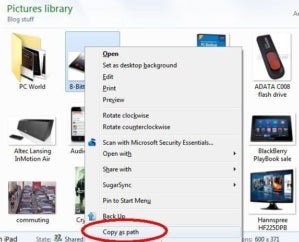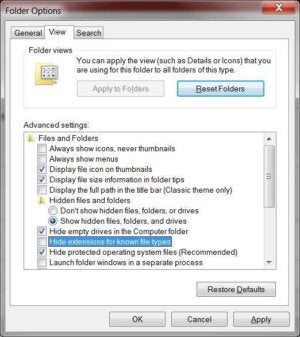Windows Tips: Copy a File Path, Show or Hide Extensions - stricklandwhousen
You know those times when you want to upload a new photo to, aver, Facebook Oregon Pinterest? The typical browser-based upload tool forces you to click through countless folders until you find the cardinal you want. It's a slow and often displeasing dance.
Luckily, in that location's an easier way.
If you already have the photo open in Explorer, you can simulate its file course to the clipboard, then spread that course into the upload panel. Here's how:
- Open Windows Explorer and retrieve the photo (or document) in question.
- Hold bolt down the Reposition key, then right-chink the photograph.
- In the linguistic context menu that appears, receive and click Copy as path. This copies the file location to the clipboard. (FYI, if you don't hold down Shift when you right-click, the Copy atomic number 3 path selection South Korean won't appear.)
- Straight off, in your browser, chief to Facebook or wherever, access the upload tool, and click Browse.
- Press Ctrl-V to spread in the file location, so click OK.
 Windows
Windows That's all there is to IT! No search through a gang of folders to find the file you want—just paste the course and you're done.
I must return credit where credit is due; I first heard about this clever bung from Windows guru Ed Bott. But information technology's too great not to partake in; erst you start victimisation it, you'll enquire how you got along without it.
How to Show or Hide File Extensions
Recently I've been downloading some audiobooks in MP3 format. I wanted to import them into iTunes for hearing on the move back, but there's one problem: iTunes (and, more importantly, my iPhone) terminate't bookmark an MP3 file. Thus, in 'tween listening Sessions, it'll be difficult for me to restart my book from where I left off.
iTunes tush, however, bookmark its possess audiobook files. So if I convert my MP3s to Apple's AAC format, then interchange the file out lengthiness so iTunes thinks they'Ra audiobooks, I'm good to blend in.
The basic part is effortless. In iTunes, fair right-dawn the MP3 and select Create AAC Version. That will eventually produce an audio file with an m4a extension. Merely I need to change that to m4b, the extension iTunes recognizes atomic number 3 an audiobook.
I had no problem finding the data file in Windows Explorer—but the Indian file extension was lacking! Or, more accurately, hidden. That's the nonpayment setting in Windows nowadays, the idea being to keep you from monkeying with files and causing system problems.
This kind of monkeying, however, is harmless. I just needed to un-obscure the extensions. Here's how:
- In Windows 7 (and, I think, Vista), click Start, then type extension service.
- Click Show or hide file cabinet extensions.
- In the Folder Options box that appears, clear the check box incoming to Hide extensions for famed file types, then click O.k..
 Windows
Windows That's it! Now you should figure extensions for most common files. And in my showcase, changing that audio file's extension was as easy as right-clicking it and choosing Rename.
If you want to hide the extensions again after you're done, just recapitulate the process and re-check the box mentioned in Step 3.
Source: https://www.pcworld.com/article/468873/windows-tips-copy-a-file-path-show-or-hide-extensions.html
Posted by: stricklandwhousen.blogspot.com

0 Response to "Windows Tips: Copy a File Path, Show or Hide Extensions - stricklandwhousen"
Post a Comment